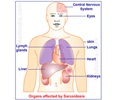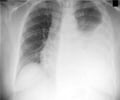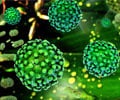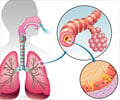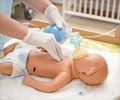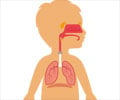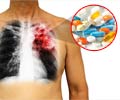Sarcoidosis
Sarcoidosis remains a mystery for science because the disease can attack any organ of the body in any location and yet the patients may not have even have any symptoms and probably never know that they have the disease. No one knows what causes sarcoidosis. It is, however, a serious illness and can prove to be fatal.
Sarcoidosis is most frequently is found in the lungs. Pulmonary sarcoidosis can cause loss of lung volume (the amount of air the lungs can hold) and abnormal lung stiffness. The disease is not contagious, however. It is characterized by the presence of granulomas, small areas of inflamed cells. Granulomas can be either inside the body or on the body's exterior. They can appear on the walls of the alveoli (small air sacs in the lungs) or on the walls of the bronchioles. These granulomatous lesions can also appear as sores on the face or shins.
The symptoms for pulmonary sarcoidosis, include dry cough without, shortness of breath, or mild chest pain. There also can be fatigue, weakness, and weight loss. These symptoms are common in many other lung diseases, so diagnosing sarcoidosis is difficult.
In those cases where symptoms do appear outside the lung, they can include a scaly rash, red bumps on the legs, fever, soreness of the eyes, and pain and swelling of the ankles.
Sarcoidosis is usually suspected when enlargement of lymph glands in the center of the lungs is seen on x-ray. To confirm the diagnosis, a biopsy is usually performed on any of the affected organs or from material in a granuloma on the skin.
About 50 per cent of sarcoidosis patients improve spontaneously. The disease is fatal in less than 5 per cent of patients.
Sarcoidosis is found throughout the world within almost all races and ages and in both sexes. However, it is rarer among Asians. It is most common among American blacks and northern European whites. It is mainly a disease of young people between the ages of 20 and 40, although a few persons past 60 have been known to have it.
Some doctors believe sarcoidosis results from inhalation of an infectious or allergic substance from the environment. Others believe that the disease is a basic problem in alteration of the cellular immune system. Ninety per cent of the cases of sarcoidosis are found in the lungs.
In most cases of sarcoidosis that have no symptoms, the disease disappears automatically and no treatment is necessary. However, if pulmonary sarcoidosis is serious, it can develop into pulmonary fibrosis (the abnormal formation of fibre-like scar tissue in the lung). This distorts the structure of the lungs and can interfere with breathing.
In most cases of sarcoidosis that have no symptoms, the disease disappears automatically and no treatment is necessary. However, if pulmonary sarcoidosis is serious, it can develop into pulmonary fibrosis (the abnormal formation of fibre-like scar tissue in the lung). This distorts the structure of the lungs and can interfere with breathing.





